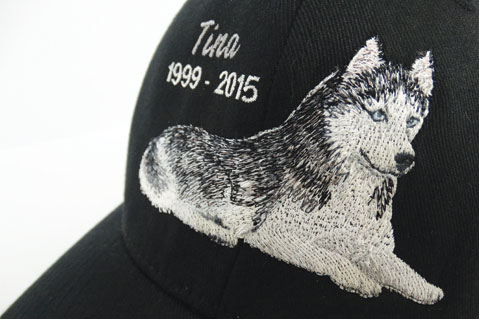Product Hub November 23, 2016
How to Reuse Your Designs
Ask your puncher whether a particular logo needs to be tweaked or completely redone when switching from shirts to caps.
Your digitizing dilemma: Can a logo that was digitized for a left-chest application on a shirt also be used on a hat, or vice versa?
The answer: In both cases, the answer is maybe. However, as a general rule, a design programmed for a hat will run better on a shirt than a logo programmed for a shirt will run on a hat. So why not program everything for hats? The answer is simple: Hats have their own set of limitations (especially embroidery area) that may not be suitable for other applications. Moreover, a cap logo normally runs center-out and bottom-up so it doesn’t pucker on the seam. That technique will almost always add trims (meaning time) to the embroidery process, making the design less efficient for flat embroidery.


It may sound self-serving for a digitizer who charges per design to tell you that, in many cases, it’s best to have one version of a design for your flat apparel and a second version for your hats. However, this will provide the superior quality necessary to blow your customers away with outstanding products and service.
There are times when it’s not possible to provide a quality job that will work on both hats and flats. When it is possible to economize in this manner, it’s your programmer’s responsibility to let you know. However, by the same token, she should let you know when it’s in your best interest to consider one version for flat work and another for hat work.
Embroidery digitizing is not one-size-fits-all. This not only applies to hats and flats, but also to different styles of each. A design programmed for a nylon jacket may not work well on a piqué knit polo or golf towel, but it may work wonderfully on a broadcloth dress shirt. A design digitized for a wool-blend Flexfit hat may not work well on a poplin golf cap. Furthermore, the logo programmed for that first nylon jacket could actually work well on a cap. If you have caps to spare, there’s no harm in experimenting. In fact, I encourage it.
Digitizers understand that you don’t always know ahead of time what final product the design will be embroidered on. Because of this, programmers do their best to program as generically as possible. When switching between fabric substrates and apparel types, it’s vital to understand that changes and edits are part of the embroidery process. You should be prepared to have this conversation with your digitizer as well as your customer.
STEVE FREEMAN is the managing partner of Qdigitizing.com. He has been a professional digitizer since 1989 and is trained on Melco, Wilcom and Pulse software systems.

Product Hub
Find the latest in quality products, must-know trends and fresh ideas for upcoming end-buyer campaigns.
